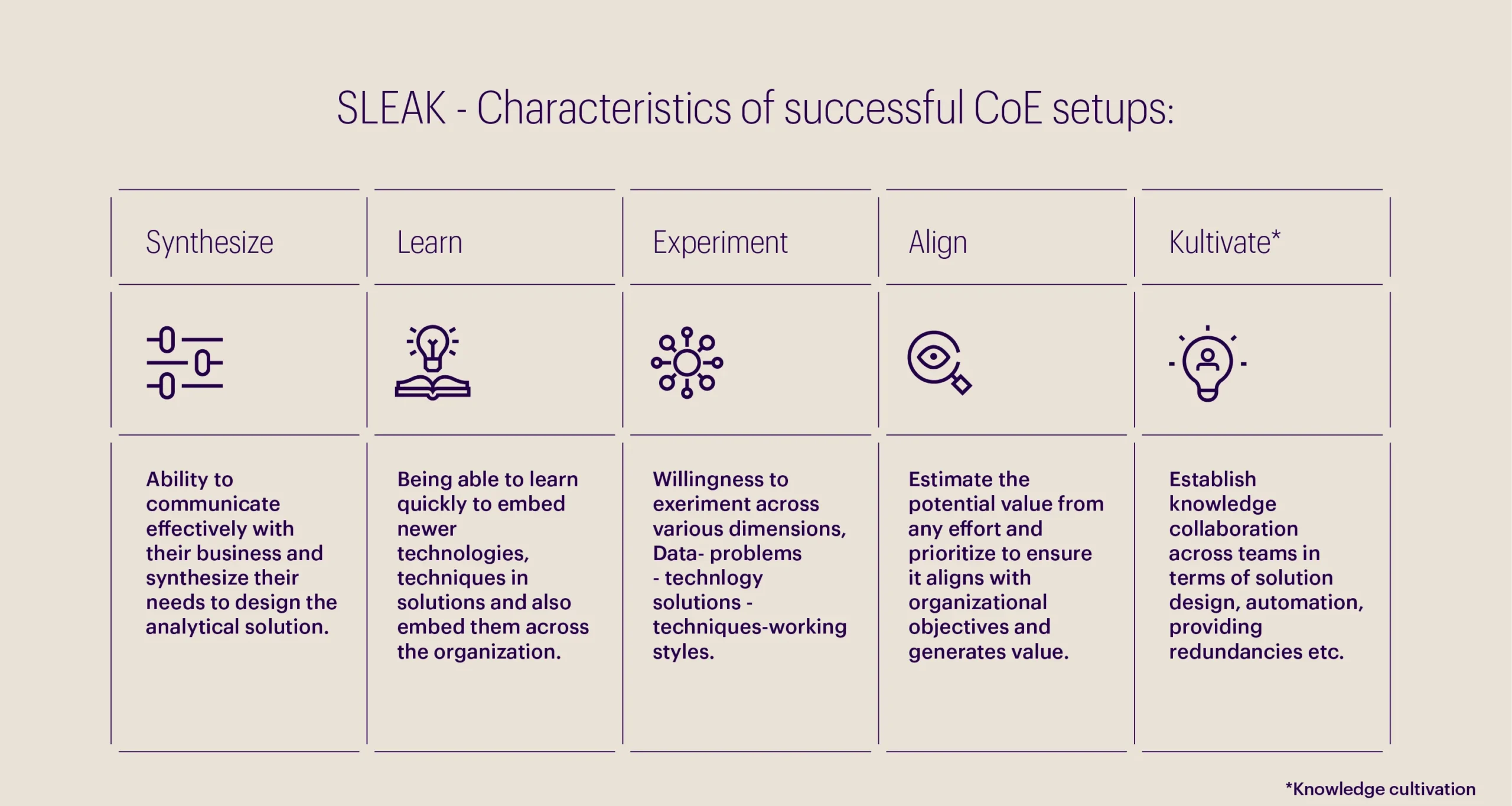The data sciences industry is growing at a rapid pace, making it seem like it has been around forever. It was only in 2012, that HBR claimed ‘Data scientist’ to be one of the sexiest job of this century. In today’s world, it is very rare for large enterprises to outsource functions like sales or strategy and analytics is proving to be the next core element in how businesses function today.
This is prompting a new wave – with a number of enterprises looking to setup their in-house analytics centres and take full advantage of the wealth of information at their disposal. With the industry not showing any signs of slowing down, it is important to understand what makes analytics centres and teams successful.
The analytics powertrain:
There exists a popular myth, that an Analytics centre is deemed a success or failure solely based on the talent it is able to attract and retain. While talent is important, it is not the sole driver of success. The most critical element of the centre’s success is its integration with the organization and the value it drives.

So how should this integration be engineered?
Analytics teams and their processes are no longer ad-hoc. Enterprises often make the mistake of treating analytics teams as support and outsource them and as a result isolating them from the business and the decision-making process. Using analytics for pure reactive needs reduces the potential and the chances of it being successful. Rather, it should be a cycle that balances between proactive and reactive modes.
Like a vehicle’s powertrain mechanism transmits the power from the original source of energy to the surface of the road analytics centres should drive all phases of the business lifecycle to propel the organization forward.
For example, business Performance could be decoded using attribution models, which in turn determine the Strategy to be adopted. Similarly, scenario generators that provide an insight on how to gain a competitive advantage could be leveraged into fine-tuning an enterprise’s strategy. Once the strategy is finalized, a series of analytical experiments could aid the go-to-market Decisions and finally, operationalization on the ground occurs through Activities that are streamlined using systems that recommend the best action.
It is therefore important to build analytics centres and teams as ‘Powertrains’ to ensure their success and relevance in the organization by integrating them in every step of the business process.
